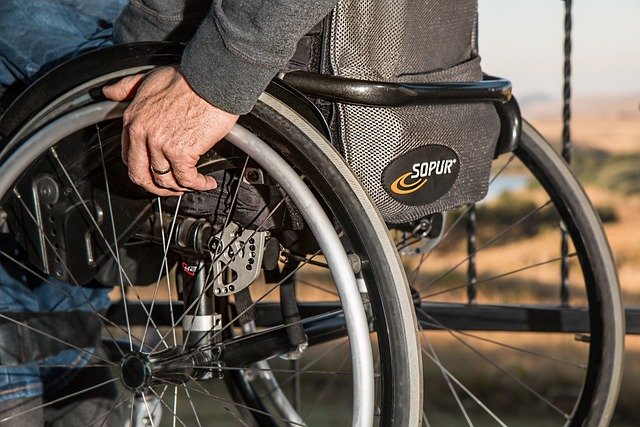Portable Lightweight Wheelchairs: Features, Benefits, and Applications
Wheelchairs have long been essential mobility aids for individuals with limited mobility. In recent years, portable lightweight wheelchairs have gained popularity due to their convenience and versatility. These innovative devices offer enhanced freedom and independence for users while addressing the challenges of traditional, heavier wheelchairs. This article explores the key aspects of portable lightweight wheelchairs, their common features, and situations where they prove most beneficial.

What are portable lightweight wheelchairs?
Portable lightweight wheelchairs are mobility devices designed for easy transportation and maneuverability. Unlike standard wheelchairs, these models are constructed using lightweight materials such as aluminum or titanium, significantly reducing their overall weight. Typically weighing between 15 to 30 pounds, portable lightweight wheelchairs can be easily folded, disassembled, or compacted for storage and travel. Their design prioritizes both functionality and convenience, making them an ideal choice for users who lead active lifestyles or frequently need to transport their wheelchair.
What materials are commonly used in lightweight wheelchair construction?
The materials used in lightweight wheelchair construction play a crucial role in their portability and durability. Aluminum is one of the most popular choices due to its excellent strength-to-weight ratio and corrosion resistance. Titanium, while more expensive, offers even greater strength and a lighter weight than aluminum. Some manufacturers also incorporate carbon fiber components, which provide exceptional strength and rigidity while further reducing weight. Additionally, high-grade plastics and composite materials are often used for smaller parts and accessories to optimize the wheelchair’s overall weight and performance.
What are the key features of portable lightweight wheelchairs?
Portable lightweight wheelchairs come with a range of features designed to enhance user comfort and convenience. Foldable frames are a standard feature, allowing for easy storage and transportation. Many models feature quick-release wheels, enabling users to remove the wheels for even more compact storage. Adjustable footrests and armrests provide customizable comfort, while some designs offer swing-away or removable footrests for easier transfers. Lightweight, puncture-resistant tires are common, reducing maintenance needs and ensuring smooth operation. Some models also include anti-tip devices for added safety and push-to-lock brakes for secure positioning.
How do portable wheelchairs differ from standard models?
The main differences between portable and standard wheelchairs lie in their weight, design, and intended use. Portable wheelchairs are significantly lighter, often weighing less than half of their standard counterparts. They are designed with compact folding mechanisms or easy disassembly in mind, making them ideal for travel and storage in small spaces. Standard wheelchairs, while generally more robust and suitable for full-time use, lack the same level of portability. Portable models may have slightly smaller wheels and a more compact overall design, which can impact their performance on certain terrains compared to standard wheelchairs.
What situations benefit most from portable lightweight wheelchairs?
Portable lightweight wheelchairs excel in various situations where mobility and convenience are paramount. They are particularly useful for travel, allowing users to easily navigate airports, cruise ships, and tourist destinations. These wheelchairs are also beneficial for individuals who frequently transition between different modes of transportation, such as cars, buses, or trains. In healthcare settings, portable wheelchairs facilitate easier patient transfers and transport within facilities. Additionally, they are ideal for occasional use at home or in public spaces where storage space is limited, such as small apartments or office environments.
How do users and caregivers benefit from lightweight wheelchair designs?
Lightweight wheelchair designs offer numerous benefits to both users and caregivers. For users, the reduced weight means increased independence, as they can more easily maneuver the chair and lift it when necessary. This enhanced mobility can lead to improved confidence and a greater willingness to engage in various activities. The portability aspect allows users to maintain their mobility in diverse settings without relying heavily on assistance. For caregivers, lightweight designs significantly reduce the physical strain associated with pushing, lifting, and transporting the wheelchair. This can prevent injuries and fatigue, especially for those providing long-term care. The ease of folding and storage also simplifies daily routines and travel planning for both users and caregivers.
In conclusion, portable lightweight wheelchairs represent a significant advancement in mobility aid technology. By combining reduced weight with enhanced portability and versatile features, these wheelchairs offer users greater independence and flexibility in their daily lives. Whether for travel, occasional use, or as a complement to a standard wheelchair, portable lightweight models provide valuable mobility solutions for a wide range of situations and user needs.
This article is for informational purposes only and should not be considered medical advice. Please consult a qualified healthcare professional for personalized guidance and treatment.




